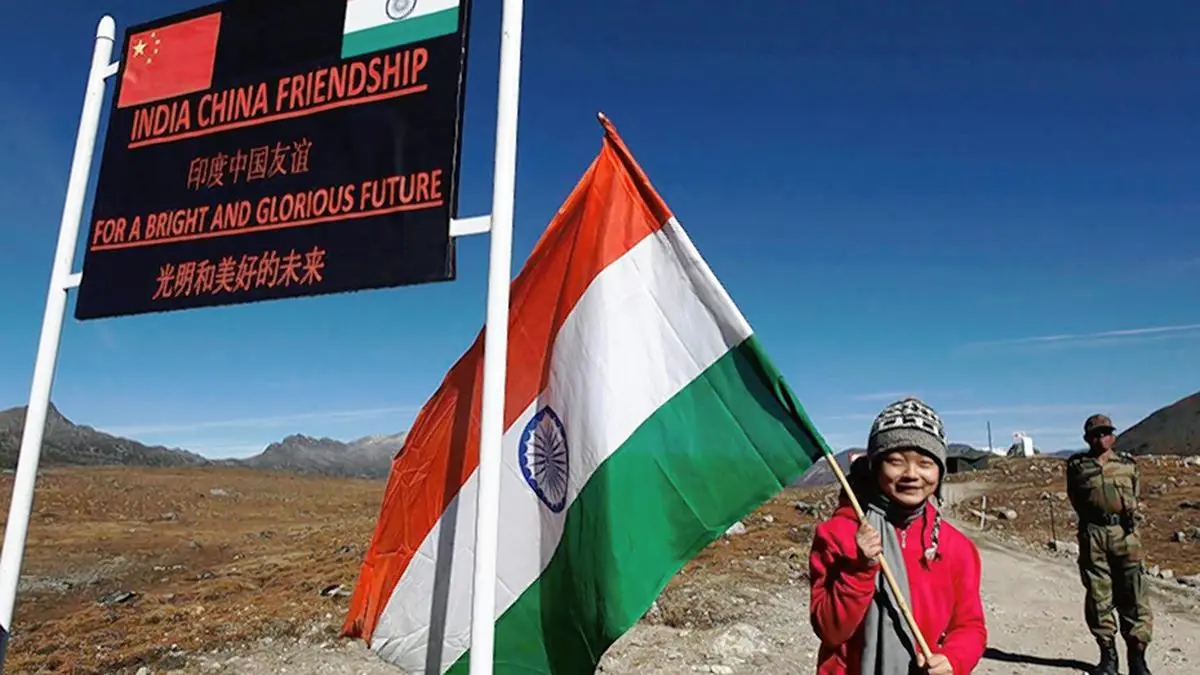What’s in today’s article?
- Background
- Domestic Industry’s Dependency on Chinese Machinery
- How Visa Norms Are Different for Chinese Nationals?
- FDI Restrictions on China
- Domestic Industry’s Request to the Union Government
Background
- Two Union ministries, Electronics and Information Technology, and Commerce and Industry, are advocating for relaxed visa regulations for Chinese technicians.
- This is due to the rising concerns from the domestic industry about unfulfilled export orders due to visa delays for Chinese technicians.
- The problem was highlighted in several forums, including the Board of Trade (BOT) meeting in January.
- The BOT advises the Commerce and Industry Ministry, with annual meetings attended by central and state government officials, major trade and industry bodies, Export Promotion Councils, and industry associations.
- The Department for Promotion of Industry and Internal Trade and the Ministry of Electronics and Information Technology (MeitY) have reportedly communicated their requests to the Ministry of External Affairs (MEA).
- Although the domestic industry has imported and installed Chinese machinery, it cannot operationalize the plants due to visa issues.
- This issue arose after the Galwan clash in 2020.
- Since then, efforts to send Indian professionals to China have been ineffective, as Chinese authorities quickly approve visas for importers but delay those for Indian manufacturers and government officials.
Domestic Industry’s Dependency on Chinese Machinery
- The productivity of Chinese professionals is of high quality. They can help produce 150 items with the same resources that currently produce 100.
- The Chinese technicians usually stay in India only for a year, share the expertise and then return and this is in the interest of our manufacturing.
- The domestic industry relies on Chinese professionals because of its significant dependence on China for crucial components in most electrical and electronic segments.
- Official data indicates that out of the nearly $100 billion worth of imports from China, around 60% comprised engineering and electronic items, which are essential for fulfilling India’s export orders.
- However, due the strained geopolitical relationship with China, India has implemented strict quality norms to reduce Chinese imports of mass consumption items and intermediate products.
- Simultaneously, India is promoting domestic manufacturing through the Production Linked Incentive Scheme (PLI) in strategic areas.
How Visa Norms Are Different for Chinese Nationals?
- India allows foreign nationals to enter for business activities under ‘Employment’ and ‘Business’ visa categories.
- Employment visas are granted for one year at a time to skilled professionals, while business visas are valid for five years for those setting up ventures in India.
- However, for Chinese nationals, only single-entry tourist and business visas valid for up to three months are issued, with other visa types requiring prior clearance.
- Additionally, employment visas are not granted for jobs that qualified Indians can perform.
- Industry sources noted that while the government permits limited entry of Chinese professionals under Production Linked Incentive (PLI) schemes, many manufacturers are forced to relocate operations to countries like Bangladesh, where there are no such restrictions.
FDI Restrictions on China
- Following the Galwan clash in 2020, the Indian government implemented measures to reduce Chinese influence on its economy.
- A significant change was made to the Foreign Direct Investment (FDI) policy through Press Note 3 (PN3), which mandated that investments from countries sharing land borders with India be approved through the government route.
- Official data shows that, since the PN3 modification in April 2020, India had approved only about a quarter of the 435 FDI applications from China by June of the previous year.
- Despite this, China’s contribution to India’s total FDI equity inflows is minimal.
- From April 2000 to December 2021, China ranked 20th, with a mere 0.43% share, amounting to $2.45 billion, of the total FDI equity inflow into India.
Domestic Industry’s Request to the Union Government
- Industry representatives have indicated that visa approval delays are negatively impacting the manufacturing sector, including the leather industry, which is increasingly shifting to sports footwear.
- Industry members have requested MeitY and the Commerce Ministry to allow Chinese professionals only for specific companies importing their products.
- The industry acknowledges the government’s concerns. Hence, it wants short-term visas for the Chinese technicians to help the commissioning of the plant and is willing to take safeguards as per regulations.
Q1. Who is Galway Valley named after?
The Valley is named after Ghulam Rassul Galwan. He was a Ladakhi who climbed the Karakoram range, Yarkand, Tibet, and the Pamirs range.
Q2. What is a Red Passport in India?
A red passport in India is a diplomatic passport issued to diplomats and Indian Foreign Service (IFS) officers for official business, while a normal passport is for regular citizens for leisure, business, or educational travel.
Source: Production stalled, MeitY and Commerce want visa norms for Chinese eased
Last updated on December, 2025
→ Check out the latest UPSC Syllabus 2026 here.
→ Join Vajiram & Ravi’s Interview Guidance Programme for expert help to crack your final UPSC stage.
→ UPSC Mains Result 2025 is now out.
→ UPSC Notification 2026 is scheduled to be released on January 14, 2026.
→ UPSC Calendar 2026 is released on 15th May, 2025.
→ The UPSC Vacancy 2025 were released 1129, out of which 979 were for UPSC CSE and remaining 150 are for UPSC IFoS.
→ UPSC Prelims 2026 will be conducted on 24th May, 2026 & UPSC Mains 2026 will be conducted on 21st August 2026.
→ The UPSC Selection Process is of 3 stages-Prelims, Mains and Interview.
→ UPSC Result 2024 is released with latest UPSC Marksheet 2024. Check Now!
→ UPSC Prelims Result 2025 is out now for the CSE held on 25 May 2025.
→ UPSC Toppers List 2024 is released now. Shakti Dubey is UPSC AIR 1 2024 Topper.
→ UPSC Prelims Question Paper 2025 and Unofficial Prelims Answer Key 2025 are available now.
→ UPSC Mains Question Paper 2025 is out for Essay, GS 1, 2, 3 & GS 4.
→ UPSC Mains Indian Language Question Paper 2025 is now out.
→ UPSC Mains Optional Question Paper 2025 is now out.
→ Also check Best IAS Coaching in Delhi

















